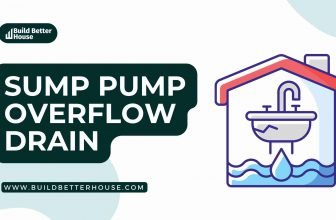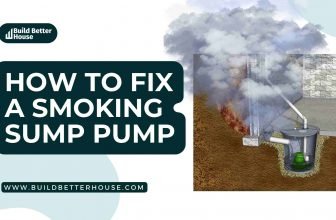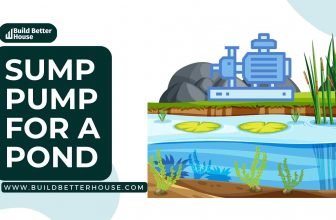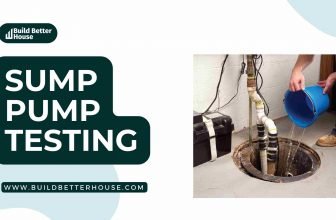Sump Pump Replacement: Essential Tips for a Smooth Process
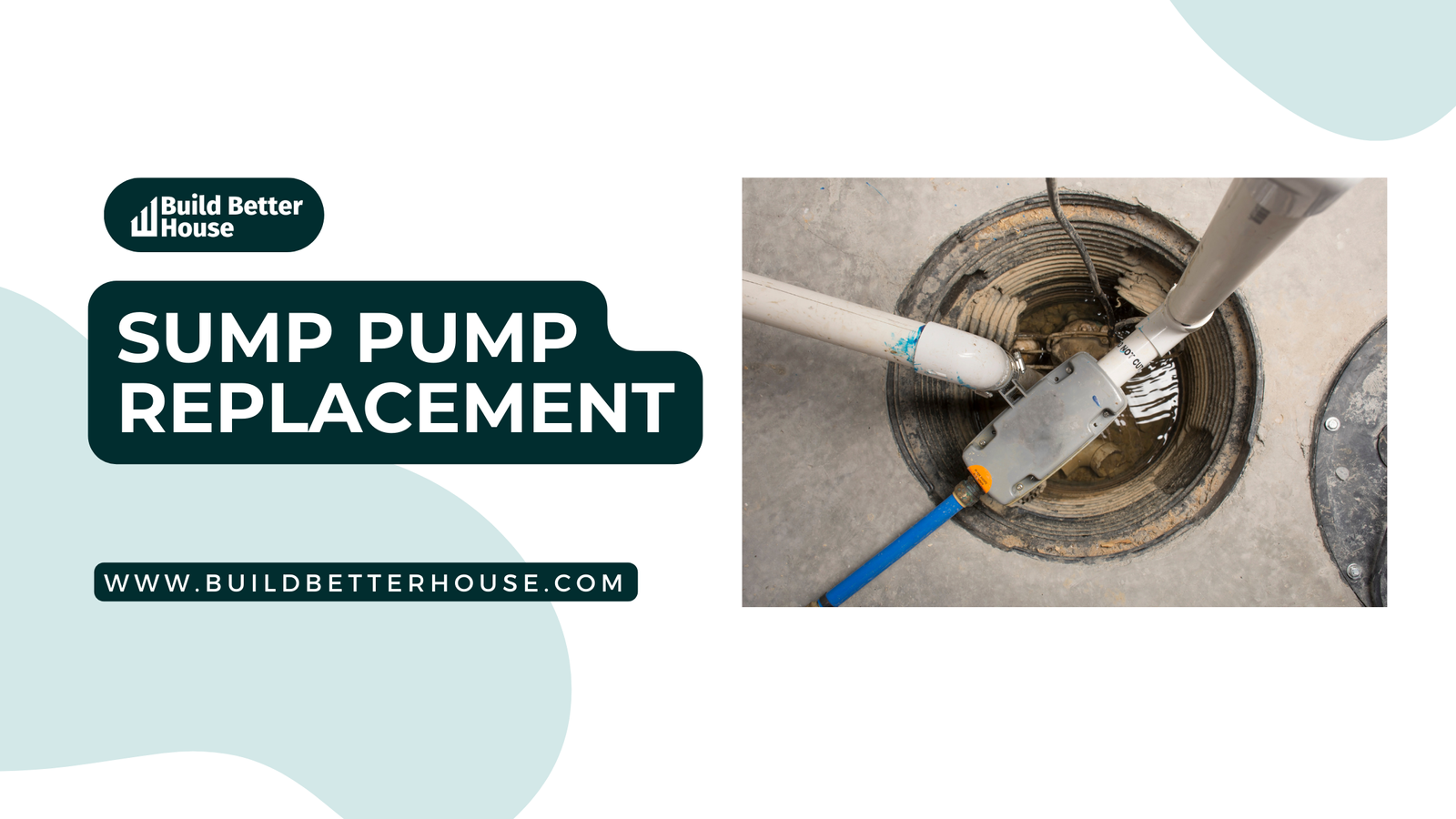
A sump pump is a crucial component in keeping your home dry and free from water damage, mold, and mildew. Like any other household device, your sump pump will eventually wear out and require replacement. Knowing the signs of sump pump failure and understanding how to choose the right pump for your home are essential steps in maintaining a dry and healthy living space.
There are various types of sump pumps available on the market and each one is designed for different home needs. Choosing the right sump pump for your home requires understanding the various components and considering factors such as capacity and efficiency, as well as taking your specific requirements into account. Once you’ve determined the best option, the sump pump replacement process is generally straightforward, allowing you to protect your home efficiently.
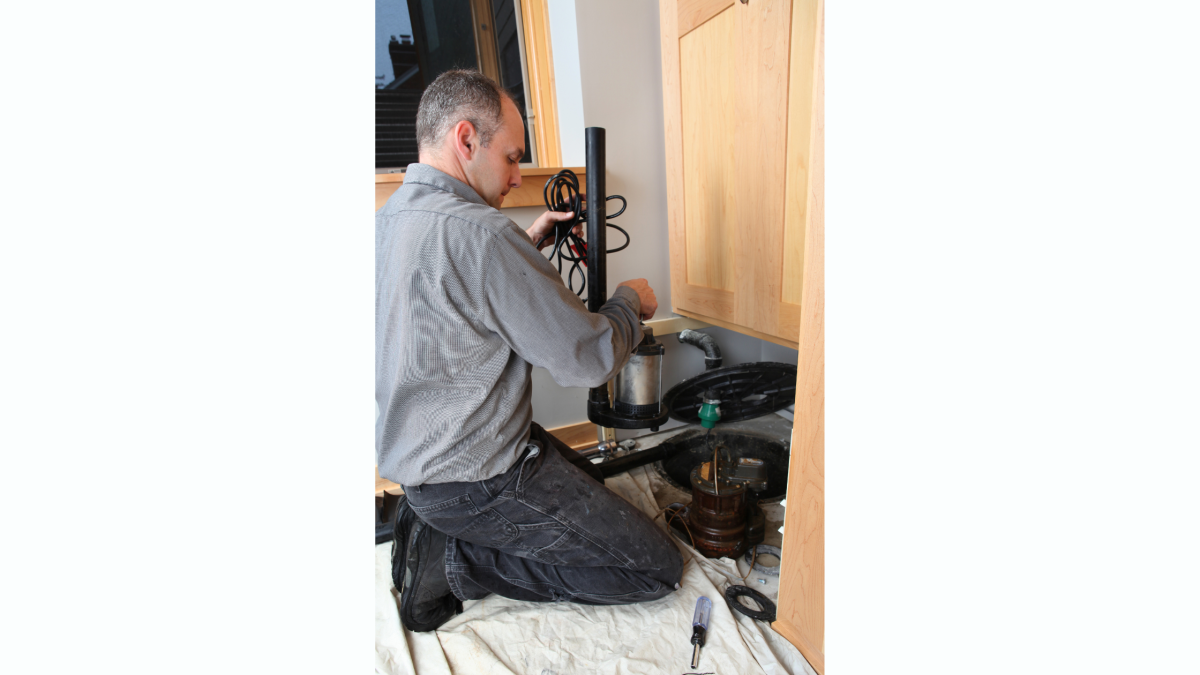
Key Takeaways
- Recognize the signs of sump pump failure to prevent water damage to your home
- Understand various sump pump types to make an informed decision when selecting a new one
- Consistently maintain and repair your sump pump to ensure its longevity and effective use
Signs You Need a Sump Pump Replacement
Inspect for Irregularities
When assessing your sump pump, pay close attention to its overall condition. Check for signs of corrosion or rust on the pump, float, and discharge line. A properly functioning float switch is crucial for the activation and deactivation of the pump. Inspect the check valve for any signs of damage or leakage, as it prevents water from flowing back into the sump pit. Additionally, verify if there are any obstructions in the impeller or storm drain that might hinder water flow.
Pump Failure Symptoms
Sump pump failure can lead to undesirable consequences, such as flooding or water damage. Be vigilant for the following symptoms:
- Loud noises: Unusual sounds coming from the sump pump, such as grinding, rattling, or humming, could indicate a problem.
- Constantly running: If your sump pump seems to be working non-stop, even when there’s little to no water, this could be a sign of malfunction.
- Power outage issues: Sump pumps should have backup power in case of an outage during a storm. Ensure your backup system functions when the main power source fails.
Decreased Performance
Poor sump pump performance may result from a variety of issues, including clogging and decreased water flow. To identify these issues, observe the following:
- Water flow: Monitor the water flow through the discharge line. If the flow appears reduced, there could be blockage or damage in the system.
- Clogged basin: Regular maintenance is necessary to keep the sump pit clean and functioning. Clear debris from the pit and ensure the pump is well-seated.
- Frequent activations: If the float switch activates more often than usual or the pump takes longer to clear the basin, this might indicate a decrease in performance.
Types of Sump Pumps
When it comes to sump pump replacement, it’s important to be aware of the two main types: Pedestal Sump Pumps and Submersible Sump Pumps. Understanding the differences between them will help you make an informed decision on which type is the most suitable for your needs.
Pedestal Sump Pump
A pedestal sump pump features a motor that’s mounted on a column above the water level, keeping it dry and easily accessible for maintenance. This type of pump has a long, narrow pipe that extends down into the sump pit. The pump’s impeller, located at the bottom of the pipe, pushes water up and out of the pit, preventing flooding.
Pros of pedestal sump pumps include:
- Cost: Generally, pedestal sump pumps are less expensive than submersible models.
- Longevity: Due to the location of the motor, these pumps often last longer as they’re not exposed to constant moisture.
Cons:
- Noise: Pedestal pumps can be noisier since the motor isn’t submerged in water.
- Appearance: This type of pump is more visible and can be considered less aesthetically pleasing.
Submersible Sump Pump
As the name implies, a submersible sump pump is designed to be completely submerged in water. The pump and motor are encased in a waterproof housing, making them resistant to water damage.
Advantages of submersible sump pumps:
- Power: These pumps are generally more powerful, making them suitable for homes prone to flooding.
- Noise: The submerged motor produces less noise, resulting in a quieter operation.
Disadvantages:
- Cost: Submersible pumps are usually more expensive than pedestal models.
- Maintenance: The submerged nature of this pump makes it more difficult to access for maintenance or repair.
When selecting a sump pump for your home, it’s important to consider factors such as cost, power, noise level, and ease of maintenance. By understanding the pros and cons of pedestal and submersible sump pumps, you can make an informed decision to find the best fit for your needs.
Sump Pump Components
Float Switch
A vital component of your sump pump is the float switch. This device is responsible for detecting the water level within your sump pit. As the water rises, the float switch activates the pump to discharge excess water, preventing basement flooding. There are various types of float switches, including tethered, vertical, and electronic switches. It is essential to inspect and maintain your float switch regularly, ensuring it operates correctly when needed.
Check Valve
The check valve is another crucial part of your sump pump system. This valve ensures that the water being pumped out does not flow back into the sump pit once the pump shuts off. It maintains the water flow in one direction, preventing any backflow that could lead to basement flooding. It’s important to inspect your check valve for proper functioning and signs of wear or damage.
Impeller
The impeller is the primary moving part within your sump pump. It’s responsible for creating the centrifugal force necessary to draw water into the pump and push it out through the discharge pipe. The impeller must be in good condition for your sump pump to operate efficiently. Keep an eye on the impeller for signs of wear, obstruction, or damage, which could negatively impact your pump’s performance.
Battery Backup
A battery backup sump pump system is an essential addition to your primary pump, offering a reliable source of power during power outages or pump failures. The battery backup ensures that your sump pump continues to function, removing water from your basement and reducing the risk of flooding. It’s crucial to maintain and periodically test your battery backup sump pump to ensure it’s ready for use during emergencies.
Sump Pump Replacement Process
Access and Assess the Sump Pit
First, locate your sump pit in your basement or crawl space. Clear any debris or obstructions around the pit to give you enough space to work. Check the condition of the sump pit, ensuring it is free from cracks or damage. If your sump pit is in good condition, proceed to the next step. If not, consider repairing or replacing the sump pit before moving forward with the sump pump replacement.
Remove the Old Sump Pump
Before you begin, ensure safety by disconnecting the electrical cord from the power source. Then, proceed to drain any remaining water from the sump pit using a shop vac or manually with a bucket. Inspect the foundation for any signs of water infiltration and resolve any issues before continuing.
Next, remove the PVC pipe that connects the sump pump to the discharge line by loosening the fittings. Carefully lift the old sump pump out of the sump pit and set it aside. Clean the pit of any debris before proceeding with the installation of the new sump pump.
Install the New Sump Pump
To install the new sump pump, first, connect the discharge pipe to the pump using a 1 1/2″ male threaded end. Use a 5′ ABS pipe or PVC pipe, depending on the manufacturer’s specifications. Secure the pipe connection with the appropriate fittings.
Carefully lower the new sump pump into the sump pit, making sure it is sitting level and stable. Connect the pump’s electrical cord to a GFCI outlet, ensuring the cord has enough slack to avoid strain. If your pump requires additional electrical work, consult a professional electrician.
Once the pump is in place and connected, test its functionality by filling the sump pit with water and observing the pump’s operation. Ensure the water is draining correctly towards the municipal storm drain or exterior sump pump location, as outlined in your local regulations.
Throughout the sump pump replacement process, maintain a confident, knowledgeable, neutral, and clear tone. Remember, safety is a priority, so always follow the manufacturer’s instructions and consult a professional when in doubt.
Cost Considerations for Sump Pump Replacement
Average Replacement Cost
When it comes to sump pump replacement, the average cost can range from $490 to $1,170. This estimation takes into account both the price of a new sump pump and the labor costs for the installation. Keep in mind that if a sump pump and pipework are already in place, you can expect to pay about $490 for replacement, or $280 if you decide to do the project yourself.
Factors Affecting Price
There are several factors that can affect the cost of sump pump replacement, including:
- Type of sump pump: Different types of sump pumps come at varying prices. For instance, submersible pumps may be more expensive than pedestal pumps, but they also tend to be more effective in certain situations.
- Sump pump size: Larger sump pumps will generally cost more than smaller ones, and they may also require a larger sump pit, potentially increasing installation costs.
- Sump pit depth: A deeper sump pit can increase the labor costs of the replacement, as it may require more extensive excavation to install or replace the pump.
- Complexity of installation: Complex installations, such as those involving multiple pumps or the need to modify the existing plumbing, can also increase labor costs and the overall cost of the project.
Professional Vs DIY Replacement
When considering sump pump replacement, you have the option of hiring a professional or attempting the project yourself. A professional can provide expertise and save you time, but they will also likely charge more for their services. Service call charges and labor costs can add up, potentially costing upwards of $1,000 for the installation.
On the other hand, a DIY sump pump replacement can save you money, especially if you’re knowledgeable about the process. However, there are potential risks involved, such as incorrect installation or damage to your home’s plumbing or foundation. The cost for the sump pump unit itself is approximately the same whether you choose to DIY or hire a professional.
In the end, it’s essential to weigh the pros and cons of each option and consider your comfort level with tackling the project on your own. Regardless of the route you choose, remember to stay within your budget and ensure you’re getting a quality sump pump that will protect your home from potential water damage in the long run.
Sump Pump Maintenance and Repairs
Cleaning the Sump Basin
Regular cleaning of your sump basin is essential to ensure proper operation and prevent damage to your sump pump. As a homeowner, you should periodically remove any gravel, silt, or debris that accumulates in the basin. This will help prevent blockages in the drainage pipes and keep your sump pump functioning efficiently.
Inspecting and Replacing Components
It’s important to inspect your sump pump’s components on a routine basis. Look for rust, corrosion, or signs of wear on the pump, float, and other parts. If you notice any issues, it may be time for repairs or replacement. This will help prevent unexpected failures and ensure your home stays protected from potential water damage.
Preventing Clogs and Blockages
To prevent clogs and blockages, follow these steps:
- Regularly inspect the inlet screen for debris, and clean as necessary
- Make sure the discharge pipe is free of obstructions that could restrict water flow
- Keep the area around your sump pump clean, especially if it’s located in a basement or crawl space with a high likelihood of debris accumulation
By taking these preventative measures, you can help maintain the efficiency and longevity of your sump pump system, protecting your home from water damage and giving you peace of mind.
Choosing the Best Sump Pump for Your Home
When it comes to protecting your home from water damage, selecting the right sump pump is crucial. There are several factors to consider before making a purchase, and this section will walk you through the key points.
Type of Sump Pump: There are two main types of sump pumps available: submersible and pedestal. Submersible pumps are quieter and more compact, while pedestal pumps generally have longer operating cycles and may last longer. Consider your space constraints and noise preferences when deciding which type is suitable for your needs.
Size: The size of the sump pump depends on the water volume it needs to handle, which is determined by your home’s layout, location, and potential for flooding. A pump with a higher horsepower will be more powerful and able to handle larger volumes of water, but may consume more energy. Conversely, a pump with lower horsepower might be sufficient for smaller volumes, resulting in energy savings.
Energy Efficiency: Aiming for energy efficiency not only helps you save on utility bills but can also contribute to being eco-friendly. Some pumps are designed to be more energy-efficient, such as those with variable speed settings or those that automatically adjust to changing water levels.
Best Sump Pumps: To help ensure your home is safeguarded against water damage, you should consider some of the best sump pumps on the market. The Wayne WSS30Vn is a highly reliable option, while the Superior Pump 92250 offers excellent value for money. Alternatively, the Zoeller M53 Mighty-Mate is a top-rated submersible pump, and the Wayne CDU1000 offers powerful performance.
Remember that having a sump pump that fits your specific needs and requirements is essential. Take the time to research different models, considering factors such as type, size, energy efficiency, and reputation before making a decision. This way, you can confidently protect your home from potential water damage.
Frequently Asked Questions
How long does sump pump replacement take?
Replacing a sump pump typically takes between 2 to 4 hours, depending on the complexity of the installation and any adjustments required. However, this timeframe can vary based on your specific circumstances and the expertise of the installer.
Can a homeowner replace their own sump pump?
Yes, a homeowner can replace their own sump pump; however, it is essential to have knowledge and experience working with plumbing systems. If you’re unsure about any steps or lack the necessary skills, it’s best to hire a professional to ensure the job is done correctly and safely.
What is the average sump pump installation cost?
The average cost to install or replace a sump pump ranges from $308 to $747, but it can vary significantly depending on factors such as the pump model, labor fees, and any additional components required. Higher-end models and complex installations can increase the cost.
What is the difference between a submersible sump pump and a standard one?
A submersible sump pump is designed to sit entirely underwater in the sump pit, while a standard, or pedestal sump pump, has a motor that remains above the water level. Submersible pumps tend to be quieter and more discreet, whereas pedestal pumps are usually more accessible for maintenance.
How often should a sump pump be replaced?
The frequency at which you should replace a sump pump depends on its usage and maintenance. On average, a sump pump should be replaced every 7 to 10 years. However, if your sump pump experiences heavy use or appears to be wearing out sooner, consider replacing it earlier to avoid possible failures or basement flooding.
What is the typical lifespan of a sump pump?
The typical lifespan of a sump pump varies based on factors such as usage, maintenance, and quality of the unit. Generally, sump pumps last between 7 and 10 years, although proper maintenance can prolong their life. Regularly inspecting, cleaning, and ensuring your sump pump is running efficiently can help extend its lifespan.



